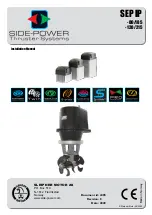Reviews:
No comments
Related manuals for V60N

TI GE PHY HSMC CARD
Brand: Macnica Pages: 16

Side-Power SEP IP Series
Brand: SLEIPNER MOTOR AS Pages: 28

BLKD102GGC2
Brand: Intel Pages: 80

AIMB-281
Brand: Advantech Pages: 98

NF4K8AB
Brand: WinFast Pages: 75
LC87F1M16A
Brand: ON Semiconductor Pages: 20

S7105
Brand: TYAN Pages: 164

AZ30-TC
Brand: DFI Pages: 107

PCM-9370F
Brand: Advantech Pages: 4

P5B PRO - QUICK
Brand: ASROCK Pages: 48

i865-G
Brand: Intel Pages: 86

P5XV3
Brand: DFI Pages: 78

LanParty UT nF3 Ultra-D
Brand: DFI Pages: 115

SD330-Q170
Brand: DFI Pages: 79

Force Trolling Motor 50"
Brand: Garmin Pages: 76

SB601-C
Brand: DFI Pages: 134

atc-1020
Brand: A-Trend Pages: 49

SY-D6IBA2
Brand: SOYO Pages: 32






















